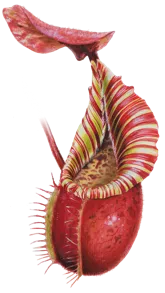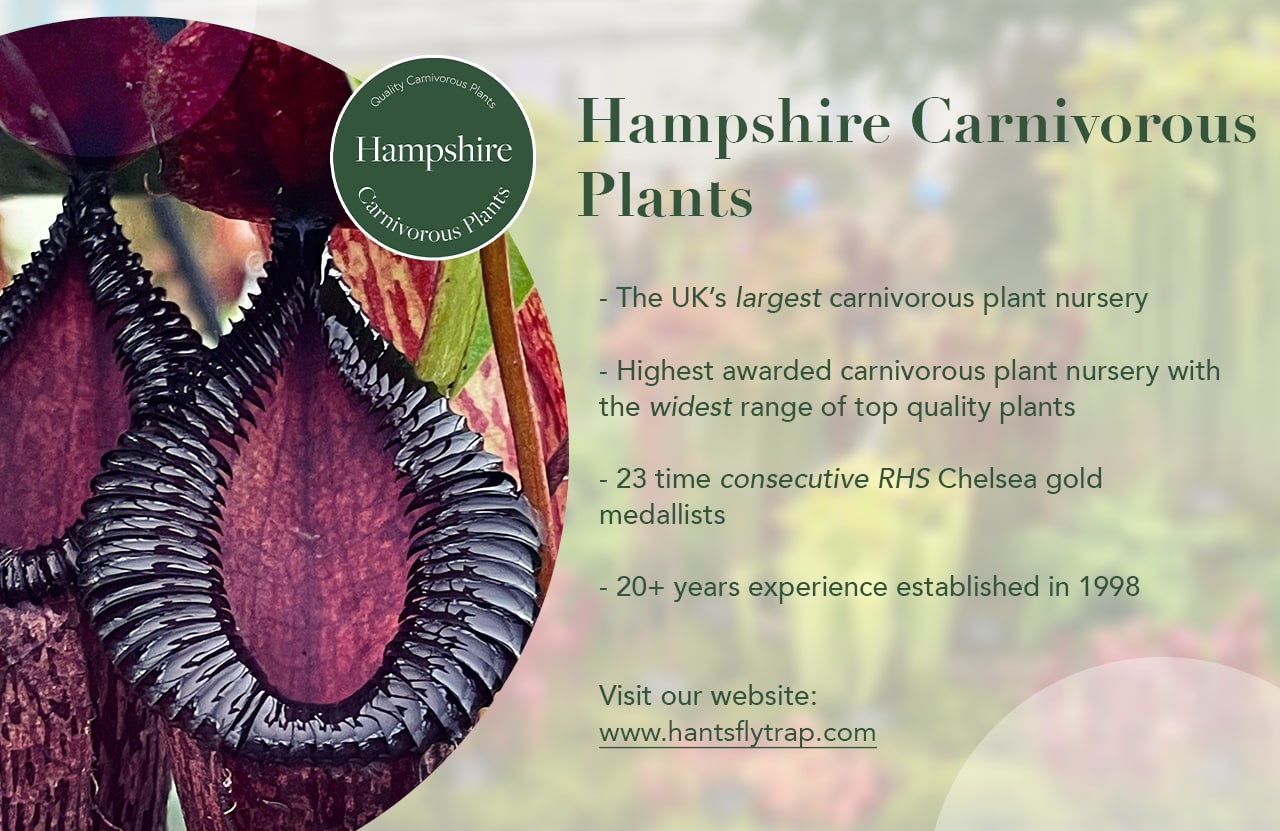Nepenthes ventricosa
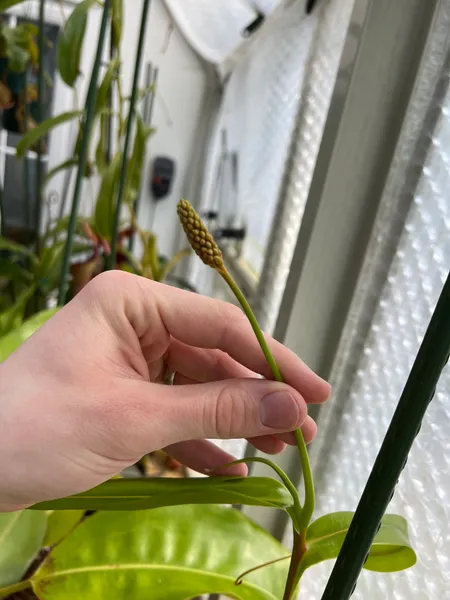 Female flower on N. ventricosa
Female flower on N. ventricosa 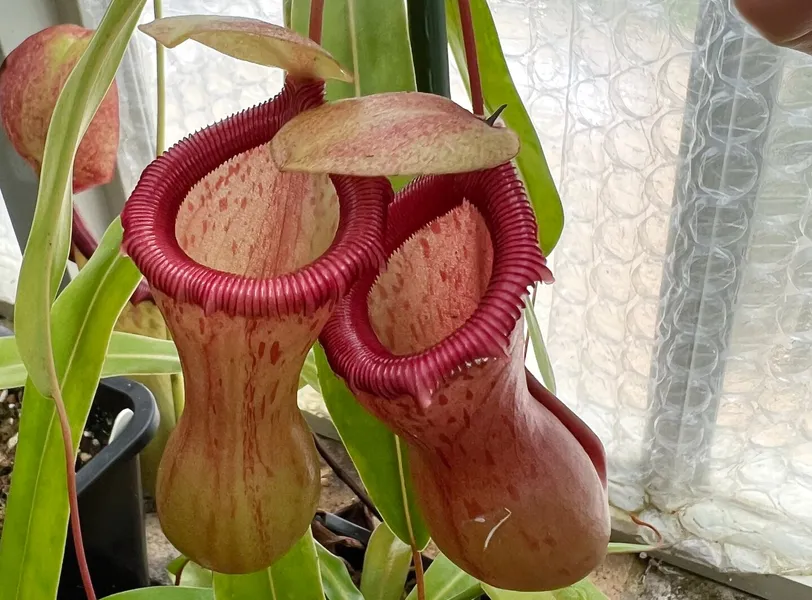 My female Nepenthes ventricosa - note the waisted pitchers
My female Nepenthes ventricosa - note the waisted pitchers 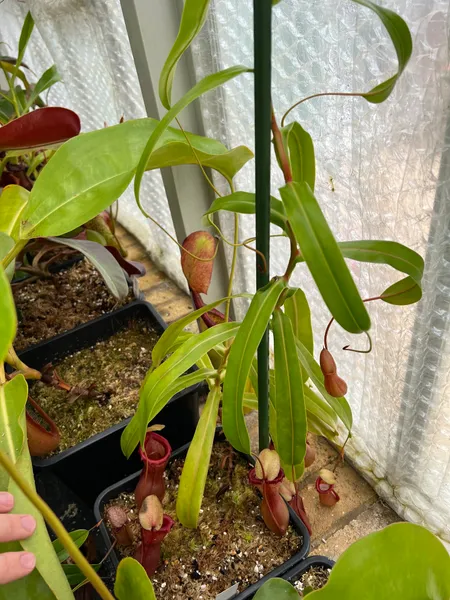 My plant is now vining, and has produced several basal shoots
My plant is now vining, and has produced several basal shoots 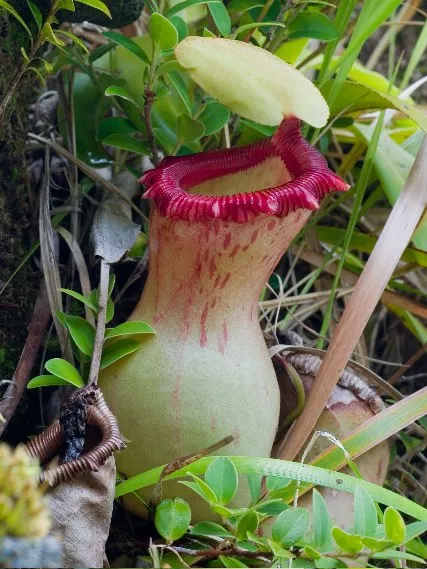 N. ventricosa lower pitcher in habitat, photographed by Alastair Robinson
N. ventricosa lower pitcher in habitat, photographed by Alastair Robinson 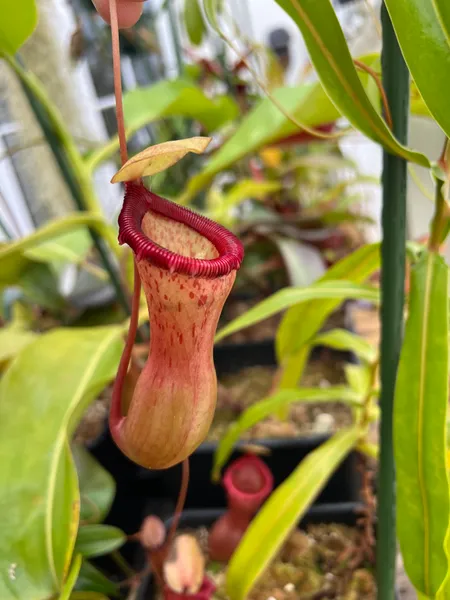 Pitchers on this one are a nice orange-red
Pitchers on this one are a nice orange-red 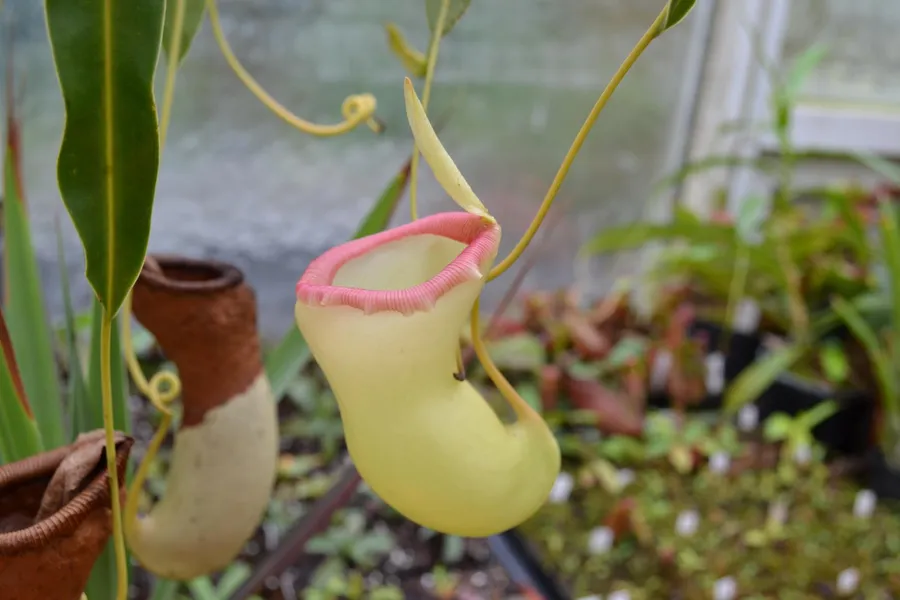 The Porcelain clone of N. ventricosa, photographed by me in Chris Klein's nursery
The Porcelain clone of N. ventricosa, photographed by me in Chris Klein's nursery Description & Care
Nepenthes ventricosa is one of the easiest tropical pitcher plant species out there! It’s endemic to the Philippines, where it grows on the islands of Luzon, Panay, and Sibuyan at highland elevations.
It has many desirable traits, and passes most of these onto its offspring when used to make hybrids. N. ventricosa holds lots of pitchers at once, and the pitchers themselves are tough and fairly long-lasting. They have a strikingly constricted waist at their midpoint, and this is where the species gets its name (the Latin ‘ventricous’). The pitchers vary in color from plant to plant - some are deep red, most are some shade of pink or orange, while others are a creamy white. The famous ‘Porcelain’ clone is particularly desired for its ivory white pitchers.
When you first start growing Nepenthes you’ll likely encounter a plant labelled as N. ventricosa but which is actually N. ventricosa × alata, commonly known as N. × ventrata - this is a natural hybrid. This clone - which is actually sterile - is even more vigorous than either parent species, and is an excellent choice for your first tropical pitcher plant.
N. ventricosa is a very adaptable grower - I know growers who’ve successfully cultivated the species in lowland through to ultra-highland conditions. I think this species is a must in every collection, if only for making reliable hybrids. My mature female plant, originally from seed, flowers every year.
It’s also worth noting that there’s excellent genetic diversity in cultivation. Nurseries including Borneo Exotics and Exotica Plants have breeding pairs of N. ventricosa and have made horticultural species seed. Lots of nice variation in these greges.
How I Grow It
| Media | Long fibre sphagnum moss, perlite, and - optionally - orchid bark (2:1:1). |
| Water | Damp but not wet. |
| Light | Very bright, diffused light. |
| Fertiliser | Maxsea or liquid orchid feed in the pitchers, every two weeks. |
| Temperatures | Particularly unfussy - grows best in intermediate or highland, but won't sulk as much as others in suboptimal conditions. |
| Humidity | Ideally 70%+ and higher at night, but adaptable to lower humidity levels of a windowsill. |
Learn more about cultivation with my guide to growing Nepenthes.
Day & Night Temperatures
Nepenthes ventricosa is a highland species, found at elevations of between 1000 and 2000 meters. This range is highlighted in orange above, and equates to temperatures of approximately 22 - 30°C during the day, and 12 - 20°C at night.
See Also
I've written profiles of the following hybrids involving Nepenthes ventricosa:
Habitat
| Native to | Philippines |
| IUCN Red List status | Least Concern |
| Natural hybrids | N. alata |
Buying N. ventricosa
| Availability | Widely available. |
| Borneo Exotics codes |
|
| Recommended nursery | California Carnivores Hampshire Carnivorous Plants |
